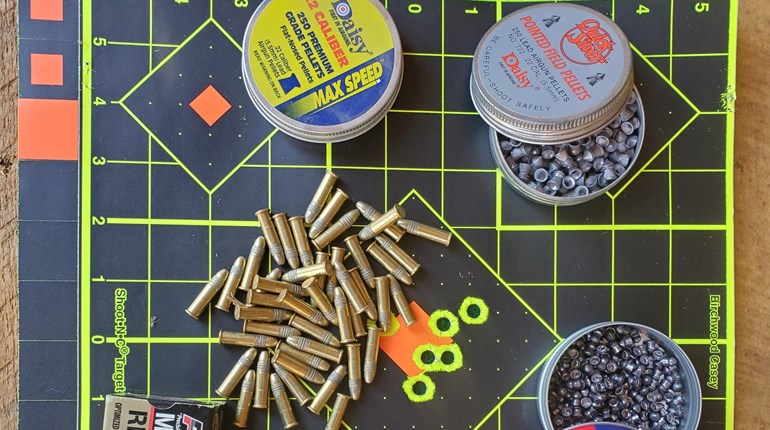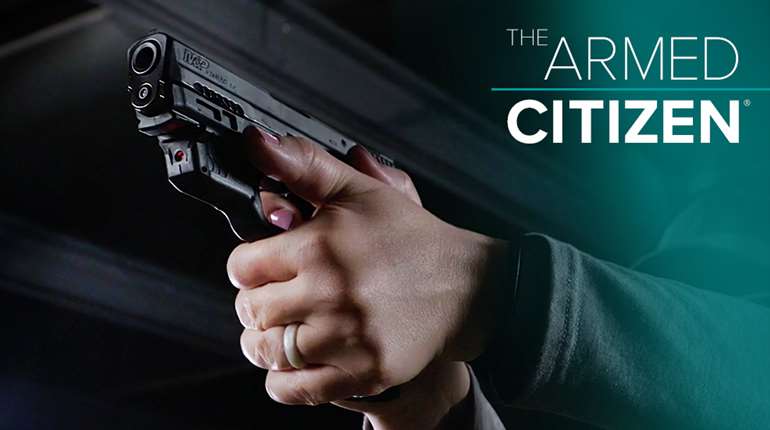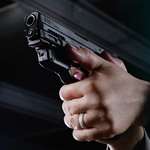
Long-range shooting is a different ballgame from plinking at 100 yards. Having taken several intensive long-range shooting courses at a couple of different esteemed shooting schools, I now consider myself a mediocre long-range shooter. My most recent course was at Gunsite Academy, where instructor and PRS competitor Il Ling New introduced me to the concept of what she called the layer cake of long-range shooting. In truth, it looks like a pyramid, but layer cake sounds more interesting, right?
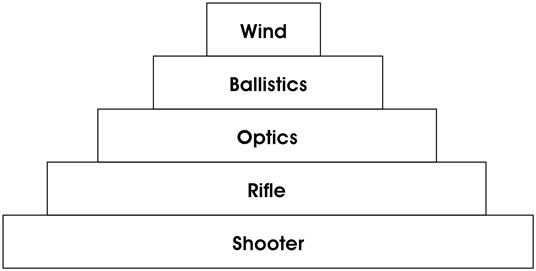
As in any pyramid, the most important, foundational layer is the first one. Each subsequent layer or aspect of shooting builds upon the layer before it, and each is smaller than the layers under it because it’s a little more difficult to get right and in many ways, a little less of a factor in good shooting. If you want to succeed at long-range shooting, you need all of the layers in the proper order and priority. Here’s how it works.
The Base Layer: The Shooter
Many rifle shooters consider themselves a “good shot” because they can punch 1-inch groups in paper off a bench rest. The truth is, they might be good shooters, but they just as easily might not, because at a mere 100 yards, poor shooting form doesn’t have a ton of room to make itself known. Stretch the shots out to 500, 800, 1,000, 1,500 yards and beyond, and the most miniscule sloppy errors in form are amplified exponentially. You cannot get away with poor form, a jerky trigger pull, or other shooter-based errors at distance.
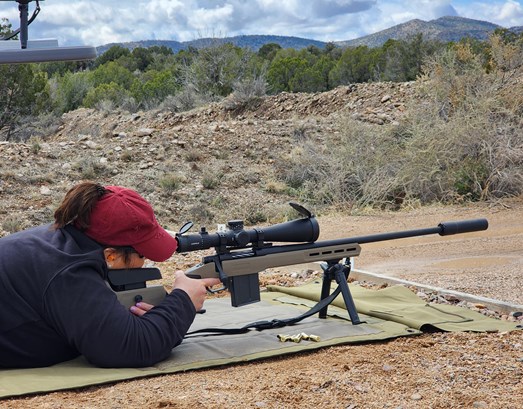
To shoot well at long ranges, you must be as steady as possible, and shooting prone with a front support (a bag or bipod) is the best way to get rock-steady. Your trigger press must be smooth and steady, and you should execute it at your natural respiratory break—that is, let out a breath and smoothly squeeze the trigger straight back before you begin your next breath.
You can have all the other layers of the cake in place, but if you can’t get steady, use good form and execute a good trigger press, you will not shoot accurately at long range.
Layer 2: The Rifle
Not all rifles are capable of shooting well at long ranges. You want a gun that shoots sub-MOA, which means it will hold its groups to less than 1 inch at 100 yards, 5 inches at 500 yards and approximately 10 inches at 1,000 yards—assuming the shooter does her part. Most modern rifles are extremely accurate out of the factory, and you don’t have to spend a fortune to buy a gun that will shoot well at 1,000 yards and beyond. That said, rifles designed for precision shooting make things easier and more comfortable and increase your personalization options.
If you want to shoot long-range, you need a gun that’s capable of it. Look for one with a sub-MOA guarantee, a clean and crisp trigger, a hefty weight to minimize recoil, a stock that fits you well, and the ability to add accessories, like a bipod, a sling, optics and maybe a suppressor.
Layer 3: The Optics
“Spend twice as much on your glass as you do on your rifle” is a oft-repeated cliché for a good reason. Good rifles are getting cheaper (or maybe cheap rifles are getting better), but a good riflescope is still going to cost you some money. To shoot well at long ranges, you need to be able to see well at long ranges, so buy the best glass you can afford. Until you get really, really serious about competing at long range, $1,000 or $1,500 should buy you enough scope to do well at 1,000 yards.
You’re looking for minimal distortion, quality coatings, good light transmission, sufficient magnification (25X is good), a ballistic turret that lets you set zero stop, and a ballistic reticle you like. Reticles can get complicated quickly, but don’t buy a scope with a more complicated reticle than you need, to keep visual clutter to a minimum.
You’ll need to decide if you prefer MOA or mrad and if you want a first focal plane or second focal plane scope.
Layer 4: Ammo and Ballistics
The projectile you select and the nuts and bolts of how exactly it flies are the next layer of the cake. Not all bullets are suitable for long-range shooting and not all ammo performs the same out of a given gun. Buy long-range ammo (if you don’t reload) and test out several brands and weights until you find the ammo your specific gun shoots the best. Then buy a lot of it—if you want to get really into the nitty gritty, buy a bunch of boxes from the same lot or batch number.
Understanding ballistics is an important part of shooting at long ranges. This is trigonometry-level stuff combined with physics that gets very complicated very quickly, but the good news is that a good ballistics app on your phone will do nearly all the work for you. You just need to know a few numbers about your rifle and your ammo, the most important ones of which you can usually find on the box or online (or measure yourself with specific tools, if you’re really hard-core). Plug the numbers into a ballistics app and it’ll spit out a table that tells you your projectile’s drop at any given distance—that lets you know how to dial the elevation turret on your scope.
These numbers are absolutely vital to hitting what you’re aiming at, but fortunately, getting the numbers is a much simpler matter than it used to be. Good long-range ammo your rifle shoots well and a good ballistics app take care of this layer.
The Top Layer: The Wind
The wind is the top layer not because it’s the least important, but because it probably takes the most skill to understand and adjust for. Wind pushes bullets around, and the farther your bullet travels, the more different speeds and directions of wind it can encounter on its way to the target. Learning how to read the wind at the gun is easy, because you’re right there. Learning to figure out what the wind is doing at the target is the next step, but it’s not the only one—you also have to consider what the wind is doing between here and there.
Many shooting ranges have flags that will show you the wind direction at various points between the firing line and the target. Failing that, examine the trees, brush and grass at different spots to get a feel for which direction the wind is blowing and how hard. You might see what we call mirage in your scope, particularly on a hot day—it’s basically heat waves, and if they’re present, you’ll be able to tell which way they’re moving. You can also judge wind direction based on the way the dust flies after your previous shot.
The only way to get good at reading the wind is to do it a lot. Make your best guess at holding your scope’s reticle to the left or right a few hashmarks based on how strong you think the wind is, and see where your bullet impacts. A spotter is immensely helpful here, but if you’re following through properly, you’ll be able to see the impact and the “splash.” Then adjust your guesses from there and walk your shot in or out as needed. It’s a very inexact science at first, but you’ll get better and better at it the more you do it.
Proper long-range shooting begins with the shooter doing her part correctly. The layer cake of good shooting builds off of that solid foundation, but all layers are important—getting one wrong will sabotage your efforts and lead to frustration on the long-range pad.













